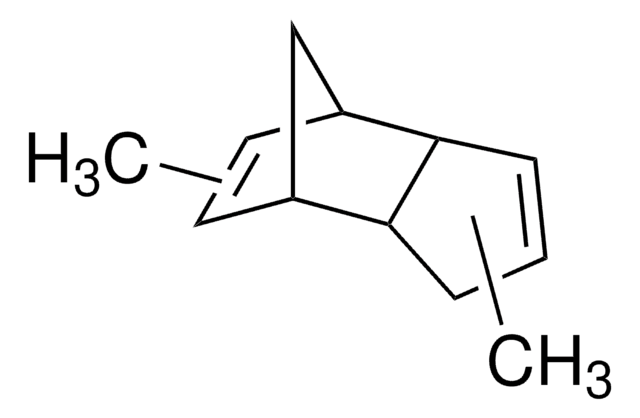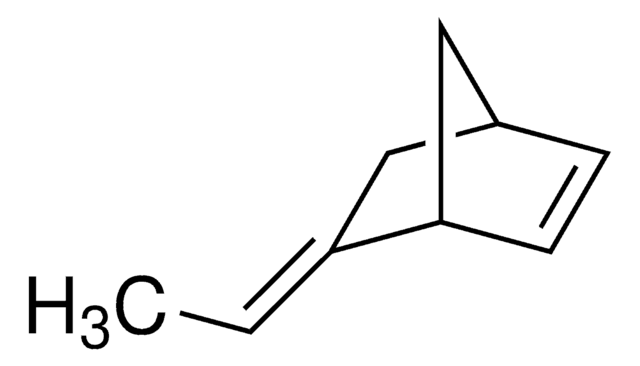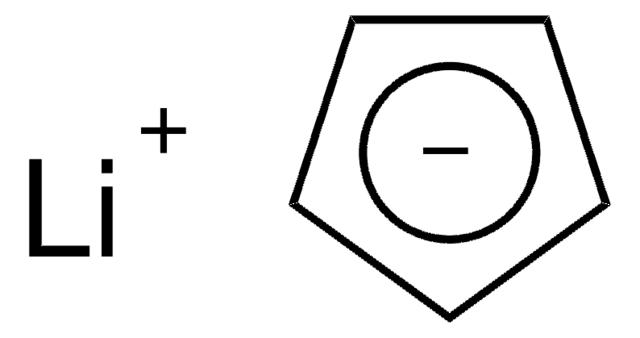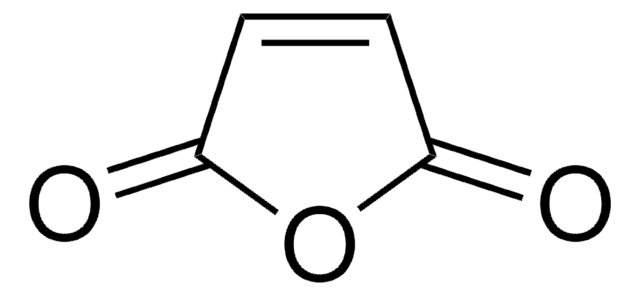454338
Dicyclopentadiene
contains BHT as stabilizer
Sinonimo/i:
4,7-Methano-3a,4,7,7a-tetrahydroindene, Cyclopentadiene dimer, DCPD
About This Item
Prodotti consigliati
Saggio
≥96.0%
Livello qualitativo
Stato
liquid
contiene
BHT as stabilizer
P. ebollizione
170 °C ((lit.))
170 °C (lit.)
Punto di fusione
33 °C ((lit.))
33 °C (lit.)
Solubilità
water: slightly soluble 0.02 g/L at 25 °C
Densità
0.986 g/mL at 25 °C ((lit.))
0.986 g/mL at 25 °C (lit.)
Stringa SMILE
C1C=CC2C3CC(C=C3)C12
InChI
[1S/C10H12/c1-2-9-7-4-5-8(6-7)10(9)3-1/h1-2,4-5,7-10H,3,6H2/t7-,8+,9?,10?/m0/s1]
1S/C10H12/c1-2-9-7-4-5-8(6-7)10(9)3-1/h1-2,4-5,7-10H,3,6H2/t7-,8+,9?,10?/m0/s1
[HECLRDQVFMWTQS-AFWXGSBKSA-N]
HECLRDQVFMWTQS-AFWXGSBKSA-N
Cerchi prodotti simili? Visita Guida al confronto tra prodotti
Categorie correlate
Descrizione generale
Applicazioni
- In the preparation of CF/p-DCPD ((carbon fiber/ poly-dicyclopentadiene) composites by VARTM (vacuum-assisted resin transfer molding) process.
- In the preparation of η5-cyclopentadienyltris(dimethylamido)zirconium catalyst.
- In the synthesis of cellulose – maleic anhydride– dicyclopentadiene copolymer matrix by free radical polymerization.
Caratteristiche e vantaggi
- Low shrinkage
- Cost-effective
- Reduced emissions of styrene
- Fast curing in thin layers.
Avvertenze
Danger
Indicazioni di pericolo
Classi di pericolo
Acute Tox. 2 Inhalation - Acute Tox. 4 Oral - Aquatic Acute 1 - Aquatic Chronic 1 - Eye Irrit. 2 - Flam. Liq. 3 - Skin Irrit. 2 - STOT SE 3
Organi bersaglio
Respiratory system
Codice della classe di stoccaggio
3 - Flammable liquids
Classe di pericolosità dell'acqua (WGK)
WGK 3
Punto d’infiammabilità (°F)
89.6 °F - closed cup
Punto d’infiammabilità (°C)
32 °C - closed cup
Dispositivi di protezione individuale
Eyeshields, Faceshields, Gloves, type ABEK (EN14387) respirator filter
Scegli una delle versioni più recenti:
Possiedi già questo prodotto?
I documenti relativi ai prodotti acquistati recentemente sono disponibili nell’Archivio dei documenti.
I clienti hanno visto anche
Global Trade Item Number
| SKU | GTIN |
|---|---|
| 454338-1KG | 4061837323928 |
| 454338-500G | 4061832340449 |
| 454338-100G | 4061832340425 |
| 454338-2.5KG | 4061832340432 |
Il team dei nostri ricercatori vanta grande esperienza in tutte le aree della ricerca quali Life Science, scienza dei materiali, sintesi chimica, cromatografia, discipline analitiche, ecc..
Contatta l'Assistenza Tecnica.














